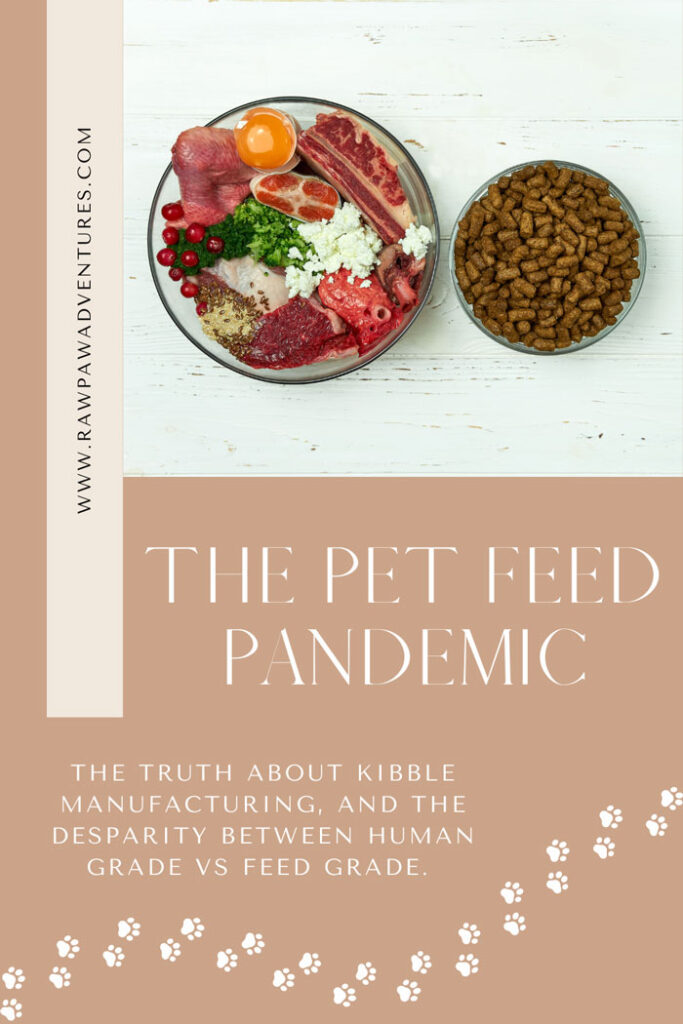Introduction
My name is Kara, and the most important thing to know about me is that I’m a pet parent and animal enthusiast, just like yourself. I’m also a Nurse Practitioner with a decade of experience in human medicine, so believe me when I say I’ve treated everything from a stubbed toe to a stroke! One trend I’ve noticed over the years is that diet and nutrition are usually not addressed in the human health world until it actually leads to negative health outcomes. This is likely because the nutrition education provided to medical professionals throughout their schooling is quite lacking, and we tend to be a more reactive society rather than a proactive one. But even without formal nutrition training, it is pretty clear to most health practitioners (and everyone else!) that some dietary habits will lead to health issues. It’s almost silly to say that a person cannot spend a lifetime eating a bag of potato chips sprinkled with a multivitamin for every meal and be healthy, because it’s just so obvious. And yet, this is what 95% of pet parents feed their pets in the form of kibble.
Once I came to this realization, which unfortunately became clear once my own pets were suffering from chronic medical conditions related to poor quality feed, I immersed myself in the world of pet wellness and became a Certified Professional Canine Nutritionist and a Certified Holistic Pet Health Coach. The steps I’ve taken and the path I’ve continued to walk has allowed my pets who were simply surviving with chronic illness to begin thriving and living the vibrant life they deserve, and I’m here to share some of that knowledge with you!
Food vs Feed
Very briefly, FEED grade ingredients are those that are meant to be consumed by animals, and do not meet the same standards and requirements for quality ingredients or safe processing and handling as those deemed FOOD grade, which undergoes more stringent monitoring and must meet higher standards to be acceptable for human consumption. It’s sad to think that any regulatory agency feels our furry four-legged family members aren’t as deserving of quality ingredients as we are, but it’s true.
There are three categories of ingredients that go into pet feed, or kibble, worth discussing here. The first is 4D meats. This stands for dying, dead, disabled or diseased animals that are not fit human consumption and are instead used for pet food. Because these types of meats are at high risk for contamination, they must be rendered, or cooked at high heat, to kill off any pathogens. This rendering process strips the nutrients from the meat until all you’re left with is a gray powder made of denatured proteins.
The next category is carbohydrates. You’ll never see the percentage of carbohydrates on the back of a kibble bag, because AAFCO (the group who creates guidelines and standards for animal feed, however poor they may be) does not recognize a requirement for carbohydrates in a dog or cat’s diet. Yet, carbohydrates make up the highest percentage of ingredients in the food. All you have to do is add up all the other percentages on the back of the package and then subtract that sum from 100. This will give you your carbohydrate load- and you’ll be distressed to find how high of a load that is. Our dogs and cats are carnivores, and they have difficulty digesting and processing carbohydrates. This leads to strain on the GI tract and can cause pancreatitis, colitis, chronic digestive issues and more. In addition to that, the carbohydrates most commonly used in kibble (corn, wheat, potatoes, etc.) come from crops that are heavily sprayed with pesticides. There is no way to remove these pesticides in the cooking process, so our pets are being exposed to toxins with every crunchy bite they consume.
Finally, we have synthetic vitamins and minerals. These need to be added back in after the cooking process since the high heat strips the ingredients of their natural nutrients. The issue with these synthetics are that (1) they come in a premade pack from other countries where regulations are less strict and they may be contaminated with chemicals, pharmaceuticals, or even toxic levels of one of more of the vitamins, and (2) they are more difficult for the body to absorb than a natural nutrient found in fresh food. This difficulty absorbing and assimilating synthetics can cause low level inflammation and actually lead to a sensitivity reaction to the synthetic substance itself. There are other synthetics sprayed onto kibble as well, including flavorings to make the finished product of burn brown balls palatable.
If you sum this all up, kibble is essentially just a chemical soup with a ticking time bomb below the surface. Real, healthy, nutritious fresh food packed with natural vitamins, minerals, protein, fats, and fiber sounds like something that every animal on this earth should have access to, does it not? And yet, our society has progressed to the point where instead of understanding the inherent need of our pets to eat fresh food just like we do, most pet parents are reaching for the bag of shelf-stable processed feed lining the shelves of most grocery stores or available on third party websites without a second thought. While that style of convenient feeding may make your life easier, it absolutely makes your pet’s life harder, and in many cases, shorter.
Where Are We Now?
In a recent interview, holistic veterinarian and cancer specialist Dr. Kendra Pope mentioned several studies done in the 1980’s which concluded that 1 of 2 pets over the age of 10 will develop cancer. She explained that these studies are seriously outdated, and in 2021, research was done that showed FIVE times that many pets will be diagnosed with cancer, and at a younger age as well. This is an outrageous and heartbreaking statistic. You can see rising cancer rates correlating with the increased prevalence of kibble since its creation in the mid-1900s.
The Feed Real Institute (www.feedreal.com) has been educating pet parents for years now about the chronic health conditions directly linked to kibble diets. These conditions make up the largest percentage of vet visits, and are significantly less prevalent in fresh fed pets. The top-ranking conditions include skin disturbances, allergies, joint disease/arthritis, GI conditions, obesity and diabetes, dental disease, recurrent ear infections, and anal glad impactions. If your pet is experiencing any of these issues, ditch the kibble and reach for something fresh to put in the bowl!
Where Do We Go From Here?
“The only real mistake is the one from which we learn nothing.” – Henry Ford
We can really only look up from here, because the alternative is to continue to allow media, marketing, and mass monopolies pushing the kibble agenda to continue to control how we think and act in regard to feeding our pets. We have been convinced, truly nearly brainwashed, into thinking that we need a rocket science degree to put food in a bowl for our pets! I’m here to tell you that this just isn’t true. You don’t need to be a genius to feed yourself or your family, and certainly not your pets. However, there are a few specific dietary needs our pets have that are different from ours.
The major components of a dog’s dish should include:
- Meat
- Raw Meaty Bones
- Secreting Organs
- Fiber (in the form of fur and/or vegetables)
That is just a simple list of the ingredients we should be providing so our pets receive the nutrients they require, and there are of course important aspects of each of these that need to be discussed. Looking to know more about these components? Come back for articles detailing each one!
Thank you for reading, being present, and being your pet’s advocate. I hope you’ll return for the next chapter, and until then, have a super fantastic day!



